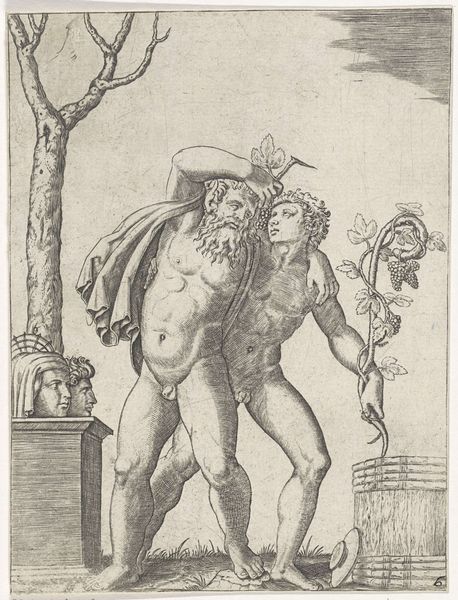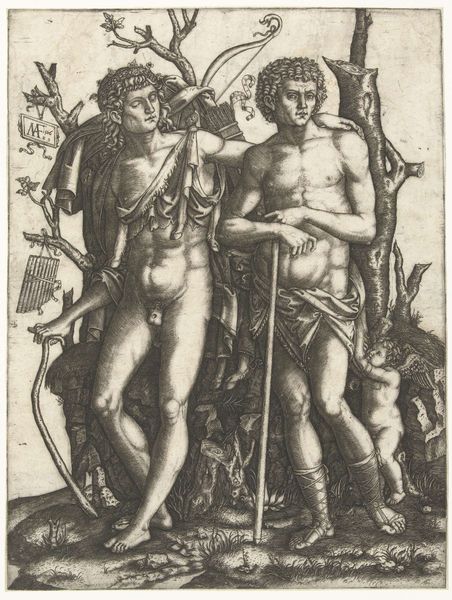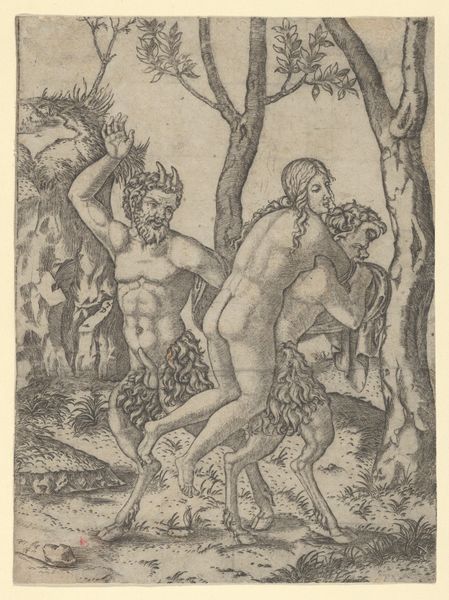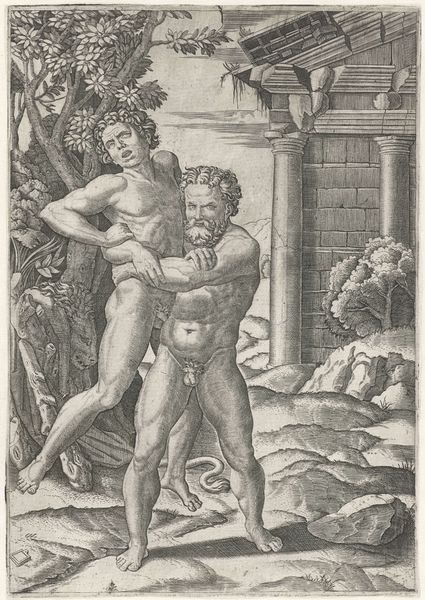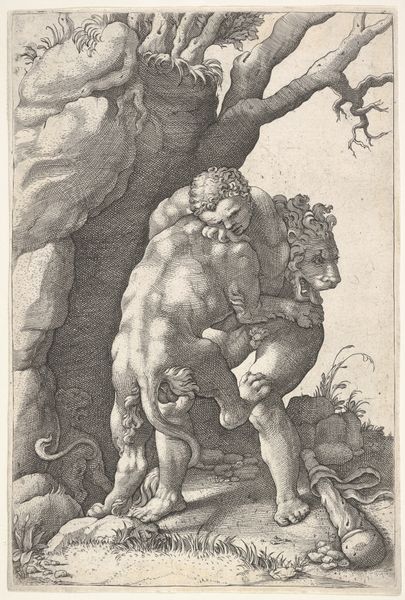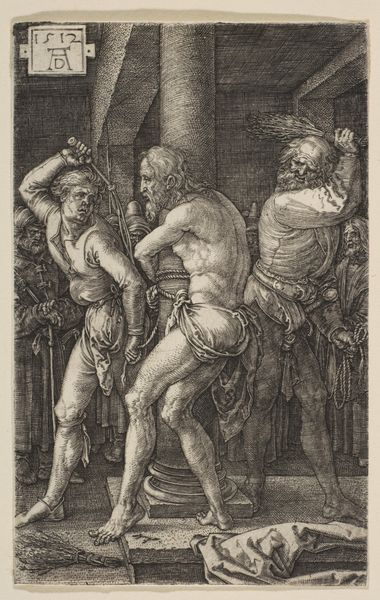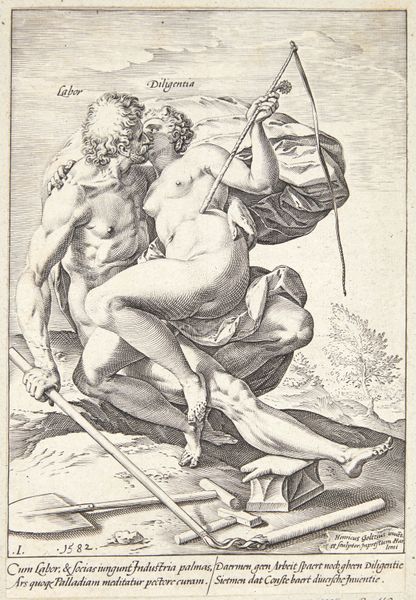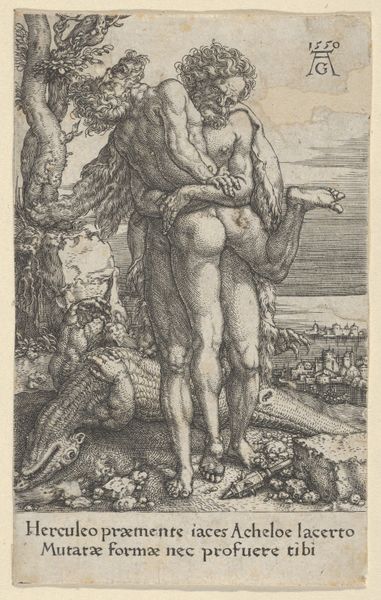
engraving
#
allegory
#
figuration
#
italian-renaissance
#
nude
#
engraving
Dimensions: height 174 mm, width 132 mm
Copyright: Rijks Museum: Open Domain
Curator: Immediately, I notice the starkness. It’s unsettling despite the classical subject matter. Editor: Indeed. Let's delve into this print titled "Silenus Supported by a Young Bacchus," dating from between 1520 and 1575. It's currently housed here at the Rijksmuseum, and crafted in engraving. The piece draws on allegorical themes, centered around the inebriated Silenus. Curator: Engraving, right, that explains the density of line. You can almost feel the pressure of the burin creating these forms. What kind of printing press would produce an image like this? And to what audience would a detailed work like this appeal? Editor: Consider the political role of such imagery. Silenus, a tutor and companion to Bacchus, represents wisdom and prophetic power… but here he's drunk, reliant on the younger Bacchus. What commentary might the artist be making on leadership, perhaps? How are the themes reflected in contemporary European social norms of gender, labor and class, when thinking about the cultural demand for a scene like this? Curator: Or perhaps, more simply, the production caters to the popular taste for the classical nude. Look how carefully the engraver renders their musculature! And think about the networks of skilled labor behind an artwork like this—the artist who designed it, the engraver who executed it, and the merchant who distributed it. This speaks to the growth of specialized work and commerce in the early modern period, with increased consumption of luxury artistic items such as these! Editor: True. We see evidence of Italian Renaissance ideals—a revival of interest in classical mythology, as well as humanism focused on human potential—translated here into material form, that nonetheless are circulated via workshops dependent on manual labor and class structures. And consider the implied viewer. Are we meant to admire Bacchus’ strength or judge Silenus's inebriation? It says a lot about how we read Renaissance ideals within this engraving's subject. Curator: Right—even the paper itself becomes significant. The relative scarcity and cost of materials in the era must necessarily affect the viewing experience. How would this change the reception to its intended buyer? Editor: So, we began by questioning who or what this scene might cater to as far as personal values of aesthetics or culture in contemporary viewers, while considering its ties to current artistic workshops in its means of fabrication... Curator: ...and in the end we have explored what this allegorical scene tells us about broader European historical tendencies: shifting class values, gendered relations, classical myth-making, humanist artistic traditions, networks of skilled artisans, plus trade that touches upon them all. It provides a window into a much wider, global cultural moment!
Comments
No comments
Be the first to comment and join the conversation on the ultimate creative platform.
